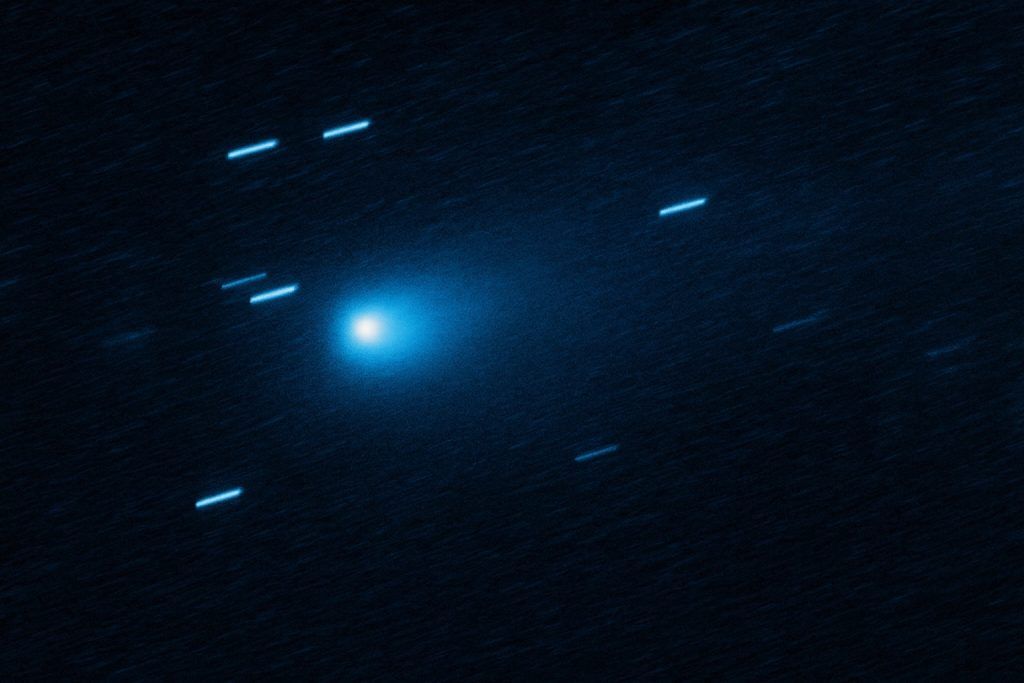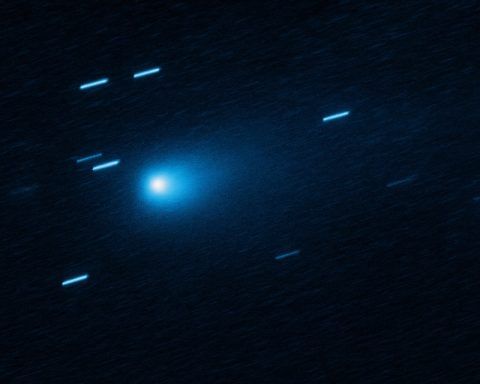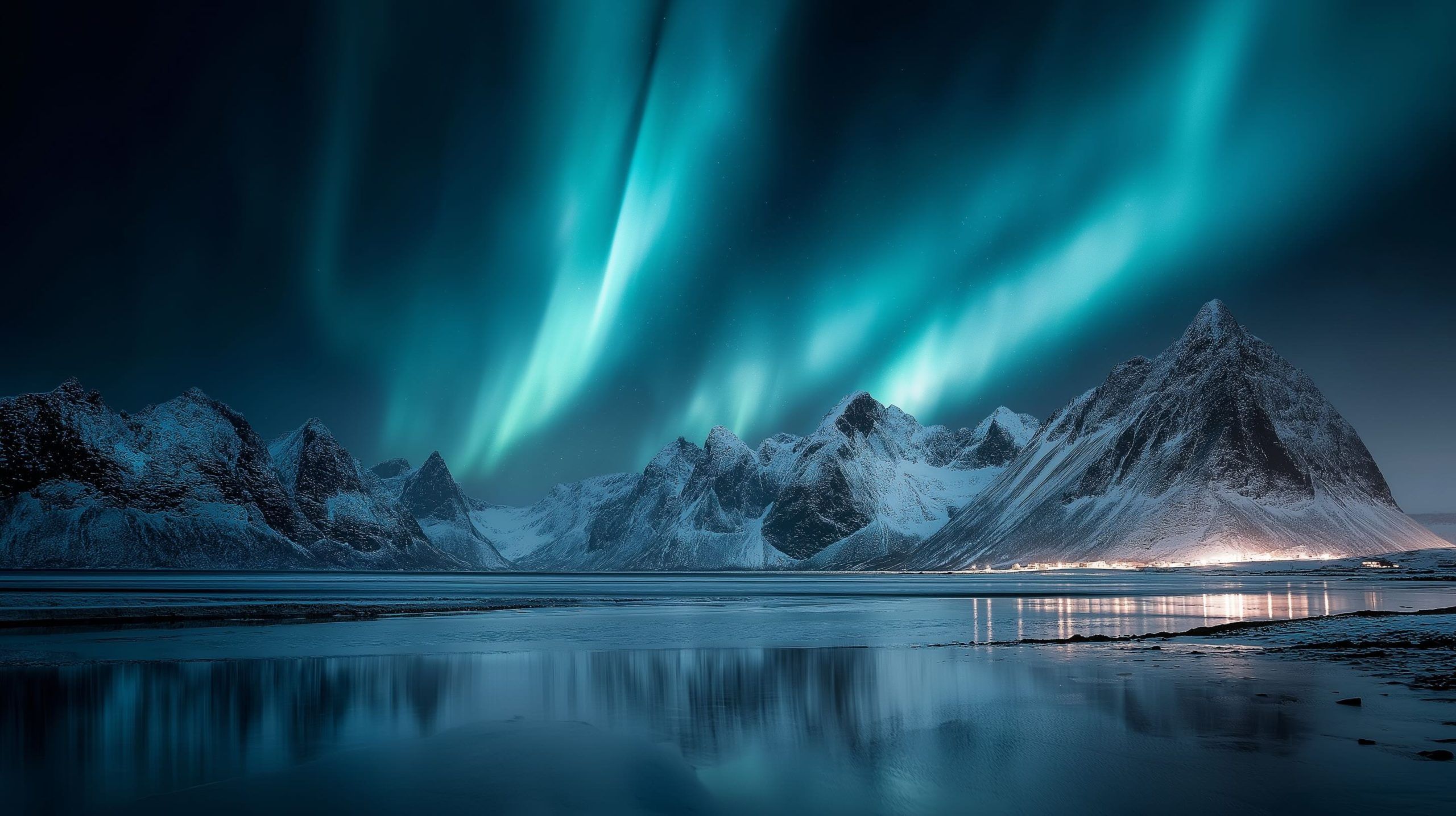If it feels like everyone is suddenly posting Northern Lights photos, you’re not imagining it. A series of severe geomagnetic storms this week has pushed the aurora borealis as far south as Texas, Florida and California, with NOAA issuing a rare G4 (severe) storm watch and describing magnetic fields up to eight times stronger than usual. [1]
At the same time, scientists confirm that the Sun is in the peak of Solar Cycle 25, a naturally stormy “solar maximum” expected to keep aurora activity elevated through at least 2025–26. [2] That means your chances of seeing — and photographing — the northern lights are better now than they’ve been in decades.
This guide walks you through, step by step:
- How to know if you can see the aurora from where you live tonight
- The best times and places to watch
- Exact camera and phone settings to photograph the Northern Lights, even as a beginner
Why the Northern Lights Are So Active Right Now
The Sun runs on an ~11‑year activity cycle. At “solar maximum,” its magnetic field flips, sunspots multiply and powerful eruptions — solar flares and coronal mass ejections (CMEs) — become more frequent. [3]
NASA and NOAA announced in late 2024 that the Sun had entered solar maximum for Cycle 25, with activity expected to stay high into 2025 and possibly 2026. [4] In May 2024, a cluster of CMEs produced the strongest geomagnetic storm in more than 20 years, driving auroras to unusually low latitudes worldwide. [5]
Since then, we’ve seen:
- Multiple strong storms in 2024 and early 2025, including a rare G5‑class event that pushed auroras into Mexico, India, Morocco and Namibia. [6]
- November 2025’s severe G4 storms, which lit up skies from Alaska and Canada all the way down through much of the continental U.S., including Florida, Alabama and California. [7]
In short: we are in a rare “golden window” where mid‑latitude observers have a real shot at seeing the Northern Lights — sometimes right from their backyard.
Step One: Can You See the Aurora Where You Live Tonight?
1. Understand the Kp index (your aurora “strength meter”)
Space‑weather agencies use the Kp index, a global 0–9 scale, to describe how disturbed Earth’s magnetic field is. Values of Kp 5 and above correspond to geomagnetic storms; the higher the Kp, the further the auroral oval expands away from the poles. [8]
There’s a rough rule of thumb: each step up in Kp pushes the equator‑ward edge of the auroral oval about 2° in geomagnetic latitude. At Kp 0 it sits near 66°; at Kp 4 it can reach ~58°, and at Kp 8–9 it can drop toward the upper 40s, making auroras possible over much of Europe and the northern half of the U.S. [9]
Very broadly:
- Kp 1–3: Great for high latitudes (northern Scandinavia, Iceland, northern Canada, Alaska).
- Kp 4–5: Opens the door for Scotland, southern Scandinavia, northern U.S. states like Montana, North Dakota, Minnesota, Michigan, Maine. [10]
- Kp 6–7: Auroras can dip into much of Europe and the northern half of the continental U.S., sometimes overhead. [11]
- Kp 8–9: Extreme events like May 2024 and this week’s storms can bring lights into unusual places — from New Mexico and Texas to southern Europe and North Africa. [12]
If your location roughly lines up with the auroral oval on forecast maps and Kp is high enough, you’ve got a chance.
2. Check real‑time aurora forecasts
Before you grab your camera, check three things:
- Space weather / Kp forecast
- NOAA’s Space Weather Prediction Center (SWPC) publishes real‑time Kp estimates and aurora “ovation” maps, plus geomagnetic storm watches (G1–G5). [13]
- Your national meteorological office often relays the same alerts (for example, the UK Met Office and various European services issue aurora advisories when conditions are favorable). [14]
- Aurora apps & citizen‑science alerts
- Cloud cover & local weather
Even with a perfect Kp, clouds kill aurora. Forecasts for recent events in Scotland, the U.S. and Ireland have all stressed that clear skies and low light pollution make the difference between a viral photo and seeing nothing at all. [17]
3. Best time of night and season
Auroras technically occur all year, but you only see them when it’s dark:
- Season: In the Northern Hemisphere, peak viewing runs roughly late August/September to April, with especially good odds around the equinoxes. [18]
- Time of night: NOAA notes that 10 p.m. to 2 a.m. local time is typically the most active window, though strong storms can extend activity earlier in the evening and closer to dawn. [19]
If tonight’s forecast checks those boxes — decent Kp, dark, clear, low light pollution — it’s absolutely worth stepping outside and looking north.
Where to Go: Best Places to See the Aurora in 2025
High‑probability aurora destinations
If you’re planning a dedicated Northern Lights trip during this solar maximum, you want locations under or near the auroral oval most nights:
- Northern Norway (Tromsø, Lofoten, Finnmark)
- Swedish & Finnish Lapland (Abisko, Kiruna, Rovaniemi, Utsjoki)
- Iceland (Reykjavík countryside, Westfjords, north coast)
- Greenland
- Northern Canada & Alaska (Yukon, Northwest Territories, Fairbanks region) [20]
Tour operators and travel editors expect 2025 to be one of the best years in over a decade to see the aurora from these regions, thanks to the current solar maximum and elevated storm activity. [21]
Key tips if you’re traveling:
- Pick regions with historically clear, dry winter skies (e.g., Abisko in Sweden, interior Iceland, parts of Yukon). [22]
- Stay several nights — even in prime locations, cloud and Kp fluctuate.
- Choose accommodation that offers aurora alerts or all‑night watchers.
Low‑latitude surprise shows
The big story of this solar cycle is how far south the lights have reached:
- May 2024’s extreme storm brought auroras to India, Morocco, Mexico, Perth and Namibia. [23]
- In October 2024, strong storms lit skies over West Texas and other mid‑latitude regions. [24]
- November 2025’s G4 storms produced lights from Minnesota, New York and Washington all the way to Texas, Alabama, Florida and California, with NOAA’s Kp hitting about 8.7 on a 0–9 scale. [25]
The lesson: don’t assume you’re “too far south” during major events. If Kp is 7–9 and your forecast mentions auroras, get somewhere dark with a clear northern view — your camera may pick up a glow even when your eyes see only faint haze.
What the Aurora Actually Looks Like to Your Eyes
A common first‑timer mistake is expecting the sky to look like a saturated Instagram photo. In reality:
- Under moderate activity, the aurora may appear as pale gray or whitish arcs or a subtle green smear, especially under light pollution.
- As storms intensify, those arcs can brighten into distinct green bands, with hints of pink or purple at the edges.
- Your eyes work in “night mode” in the dark (rod‑dominated vision), which sees shape and motion better than color — your camera sensor is much more sensitive to green and red. [26]
If you’re not sure, take a 10–20 second test exposure on your camera or phone. A faint aurora often pops out in green in the photo long before it looks obvious to your eyes. [27]
How to Photograph the Northern Lights with a Camera
You don’t need to be a professional photographer — but you do need to take control of your settings.
1. Essential gear
- Camera: DSLR or mirrorless with full manual control and good high‑ISO performance. [28]
- Lens: Wide‑angle (about 14–24mm on full frame, 10–18mm on APS‑C) with a fast aperture (f/1.4–f/2.8 ideal). [29]
- Tripod: A sturdy tripod is non‑negotiable for long exposures. [30]
- Remote shutter or 2‑second timer, and spare batteries kept warm in a pocket (cold drains them quickly). [31]
2. Starter aurora settings (for most conditions)
Use Manual (M) mode and shoot in RAW if possible; it gives you much more flexibility when editing. [32]
A reliable starting point, consistent with several modern aurora guides:
- Aperture: f/1.4–f/2.8 (widest your lens allows)
- ISO: 1600–3200 to start; decrease if the scene is very bright, increase if it’s faint
- Shutter speed:
- 1–4 seconds for very bright, fast‑moving curtains
- 5–10 seconds for typical active bands
- 15–25 seconds for faint, slow arcs
- White balance: 3500–4000 K, or just use Daylight/Auto and adjust later
- Focus: Manual, set precisely at infinity (details below)
These ranges line up closely with recommendations from Photography Life, Scandinavian travel photographers and other 2024–25 Northern Lights tutorials. [33]
Take a test shot, review the histogram and adjust:
- Too dark? Raise ISO or lengthen shutter a bit.
- Stars smeared into streaks? Shorten shutter speed; raise ISO instead. [34]
3. How to nail focus in the dark
Autofocus often fails on the night sky, so do this:
- Switch to Live View on your LCD.
- Point at a bright star or distant light on the horizon.
- Zoom in digitally (x5–x10) and slowly rotate the focus ring until the star is as small and sharp as possible.
- Switch the lens to MF (manual focus) so the camera won’t refocus by accident.
- Take a test exposure and check star sharpness at 100%.
Many pros also put a small piece of tape on the focus ring so it doesn’t creep as they move. Guides from Swedish Lapland, pro aurora photographers and countless field reports emphasise that mis‑focus ruins more images than bad exposure. [35]
Do not just twist the ring to the hard‑stop “∞” and assume it’s accurate — on many lenses, true infinity is slightly before that mark.
4. Compose for drama, not just sky
The aurora looks most powerful when it has context:
- Include foreground elements: a cabin, snowy trees, mountains, a lake or coastline.
- Use the rule of thirds: place the horizon in the lower third, leave room for the aurora above.
- Watch your northern horizon; many mid‑latitude auroras sit low rather than overhead. [36]
Avoid shining bright headlamps or car lights into your scene; they’ll blow out foregrounds and can annoy other observers.
5. Tuning settings for different aurora behavior
Aurora is dynamic. Adjust for what the sky is doing:
- Fast, rippling curtains
- Aim for shorter exposures (1–4 seconds) so the fine structure doesn’t blur into a green wash.
- Raise ISO (to 3200–6400 on modern sensors) if needed to keep shutter times short. [37]
- Slow, faint arcs
- Lengthen exposure to 15–30 seconds and keep ISO moderate (1600–3200) to avoid excessive noise. [38]
- Very bright overhead storm
- You might need to reduce exposure — try ISO 800–1600 and 2–6 seconds to avoid clipping highlights in bright pillars and coronas. [39]
Check your LCD regularly, but don’t trust it completely; use the histogram to avoid blown highlights.
6. Managing noise and cold
- Shoot RAW and expose to avoid heavy brightening in post — lifting deep shadows adds noise. [40]
- Turn off in‑camera long‑exposure noise reduction if you’re chasing fast‑changing aurora; it doubles the time between exposures.
- Keep batteries warm in an inside pocket and swap them as they drain. [41]
- Wipe moisture gently after coming indoors to avoid condensation damage.
How to Photograph the Northern Lights with a Smartphone
Modern phones are shockingly good at aurora photography — if you help them out a bit.
1. Stabilise the phone
Every serious mobile aurora tutorial starts here:
- Place the phone on a tripod, rock, car roof or even a shoe, and use a timer to avoid shake. [42]
- Shoot in landscape orientation for wider views.
2. Use Night / Astro modes
On most recent devices:
- iPhone (11 and newer):
- Turn off flash, enable Night mode and let it choose a multi‑second exposure; extend it manually if the phone allows. [43]
- Google Pixel:
- Use Night Sight; if the phone is very stable and the scene is dark, many models automatically trigger an astro‑mode with longer exposures. [44]
- Samsung & others:
- Use “Pro,” “Expert RAW” or astro modes where available; set a few‑second shutter and higher ISO.
AP’s smartphone photography advice during recent storms also highlights third‑party apps (like ProCam X Lite or NightCap) if your default camera lacks manual controls. [45]
3. Suggested manual phone settings (if you have a Pro mode)
If your phone allows manual control, try:
- ISO: 1600–3200
- Shutter: 5–15 seconds
- Focus: Set to infinity (mountain icon) rather than auto
- White balance: Around 3500–4000 K
Local news outlets covering this week’s aurora events suggest similar ranges (e.g., f/2.8, ISO 1600–3200, 10–25s) for phones and simple cameras. [46]
Take several shots, slightly tweaking exposure time until you see enough detail without blowing out the brightest parts.
Quick Field Checklist for Tonight
Before you head out, run through this mental list:
- Check Kp and aurora alerts from a reliable source (NOAA SWPC, your national meteorological service, or a trusted app). [47]
- Confirm cloud forecast looks good for a few hours.
- Find a dark location with a clear northern view and minimal light pollution. [48]
- Dress for the cold: layers, hat, gloves thin enough to operate camera controls.
- Pack gear:
- Camera + wide, fast lens + tripod
- Spare batteries and memory cards
- Phone with Night/Pro mode and portable power bank
- On location:
- Arrive early to set focus while you can still see a little.
- Start with the baseline settings above and refine every few shots.
- Watch both the sky and your forecast app; storms can intensify suddenly. [49]
Are Solar Storms Dangerous for Skywatchers?
Severe geomagnetic storms can disrupt satellites, GPS, radio communications and, in extreme cases, power grids. That’s why agencies issue G‑scale alerts (G1–G5) and warnings to infrastructure operators. [50]
For people simply watching from the ground, though, these events are safe to observe. The light you see is just excited atoms in the upper atmosphere — mostly oxygen and nitrogen emitting green, red, blue and violet hues. [51]
Final Thoughts
Because Solar Cycle 25 is at (or near) its peak, aurora experts expect more big storms and widespread displays before activity declines later in the decade. [52] Whether you live in Lapland or far from the Arctic, this is an unusually good time to:
- Learn how to read the Kp index and aurora forecasts
- Keep an eye on space‑weather alerts during active periods
- Have your camera or phone settings dialed in before the sky erupts
So if tonight’s forecast looks promising: grab a tripod, head somewhere dark, point north — and let your sensor soak up one of the most spectacular shows this solar cycle has to offer.
References
1. www.cbsnews.com, 2. science.nasa.gov, 3. science.nasa.gov, 4. science.nasa.gov, 5. science.nasa.gov, 6. www.gi.alaska.edu, 7. www.cbsnews.com, 8. www.swpc.noaa.gov, 9. www.swpc.noaa.gov, 10. www.spaceweatherlive.com, 11. www.foxweather.com, 12. science.nasa.gov, 13. www.swpc.noaa.gov, 14. www.theguardian.com, 15. www.theaurorazone.com, 16. en.wikipedia.org, 17. www.theguardian.com, 18. www.discover-the-world.com, 19. people.com, 20. www.gi.alaska.edu, 21. eusci.org.uk, 22. www.thetimes.co.uk, 23. www.gi.alaska.edu, 24. earthobservatory.nasa.gov, 25. time.com, 26. people.com, 27. www.ourmidland.com, 28. www.dpreview.com, 29. mikkolagerstedt.com, 30. www.swedishlapland.com, 31. www.davemorrowphotography.com, 32. photographylife.com, 33. photographylife.com, 34. www.dpreview.com, 35. www.swedishlapland.com, 36. www.spaceweatherlive.com, 37. niredonahue.com, 38. www.swedishlapland.com, 39. photographylife.com, 40. www.davemorrowphotography.com, 41. www.davemorrowphotography.com, 42. apnews.com, 43. apnews.com, 44. apnews.com, 45. apnews.com, 46. www.ourmidland.com, 47. www.swpc.noaa.gov, 48. people.com, 49. www.livescience.com, 50. www.swpc.noaa.gov, 51. www.ourmidland.com, 52. www.washingtonpost.com










